Beekeeping is a never-ending learning journey and I love a good word about bees, so I jumped at the chance to read “Common Sense Natural Beekeeping: Sustainable, Bee-Friendly Techniques to Help Your Hives Survive and Thrive.”
A relatively quick read, this book is packed with enlightening moments and interesting perspectives, particularly that of the Bee, which the authors present in a clean, easy to digest way.
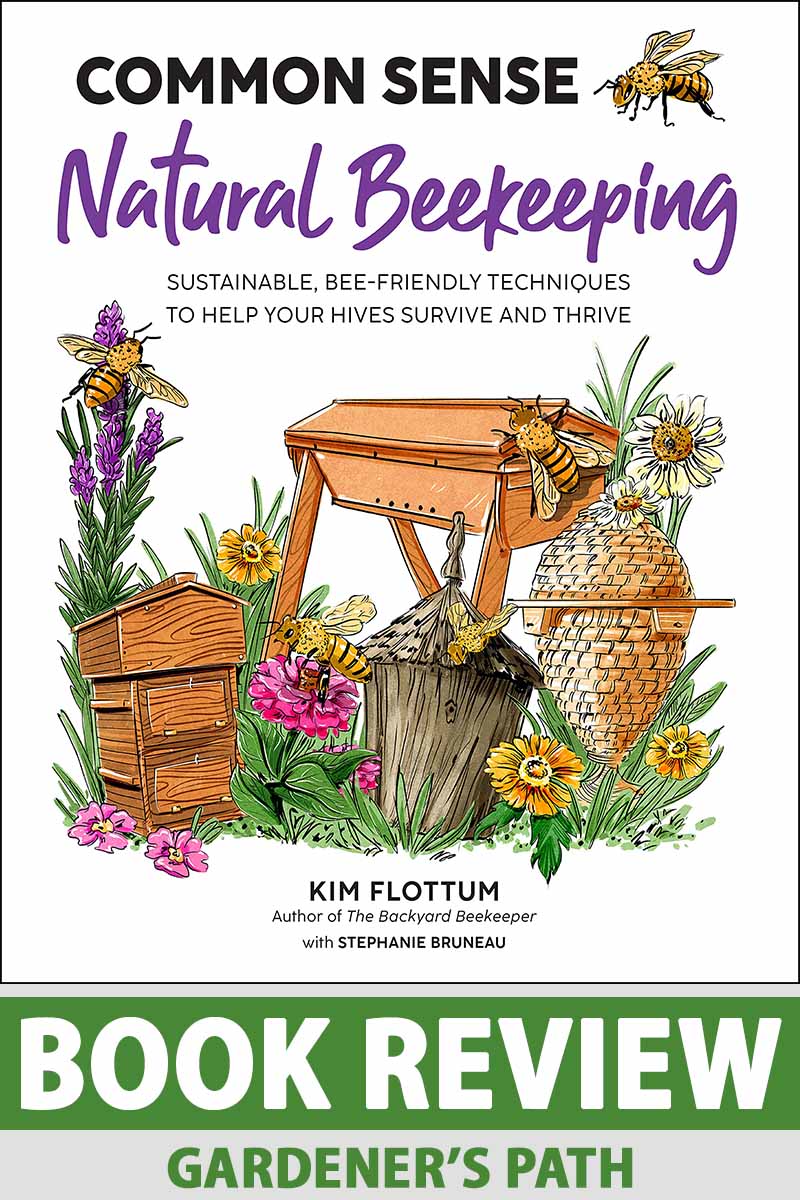
We link to vendors to help you find relevant products. If you buy from one of our links, we may earn a commission.
Plus, there are lots of beautiful photographs to drool over.
Here’s what we’ll cover in this review:
First Impressions
As soon as I opened the package that landed on my driveway, I recognized the main author’s name.
I double checked and, sure enough, it was the editor emeritus of Bee Culture, a beekeeping magazine that still finds a home in the magazine rack at my parents’ house.
I was surprised to see the cover of this book, unlike many other beekeeping books, wasn’t yellow.
Sure, the white book features beautiful front cover illustrations in shades of yellow ochre, but the deep aubergine of the title typography will make it stand out in the sea of gold on my shelf.
Flipping through the book, there are plenty of large, colorful, and high-quality images supporting and enhancing the text, and I can never get enough bee photos.

Common Sense Natural Beekeeping
The book, which feels like a high-quality coffee table magazine with its soft cover and thin, square shape, is split into three main sections, headed by an introduction, and finished with suggestions for further reading and research.
Let’s take a quick look at the writers responsible for this work, followed by a more detailed play-by-play of the contents.
Meet the Authors
As the editor emeritus of Bee Culture, self-proclaimed as the magazine of American beekeeping, and having been involved in bee things for a large part of his life, Kim Flottum is a familiar name in the industry.

He has authored several other books on bee-related subjects, including “The Backyard Beekeeper,” “In Business with Bees,” and “The Backyard Beekeeper’s Honey Handbook.”
His co-author, Stephanie Bruneau, wrote “The Benevolent Bee,” which also happens to be the name of her business.

She sells hive products and uses her teaching apiary to educate anyone who is interested about bees and bee behavior.
Section by Section
The book is split into easily digestible chunks, which are laid out clearly in the table of contents. Let’s look at what each section contains.
Introduction
As the authors introduce the idea of using the bee’s perspective when making management decisions, it becomes obvious that this book isn’t going to be a how-to for beginners.
It focuses instead on better ways of doing things, and details the mind-shift needed to pull off natural beekeeping.
The subject and style assume the reader is a beekeeper already, or at least has some knowledge of bees and beekeeping.
To illustrate where beekeeping has gone wrong in the past, Flottum and Bruneau cover beekeeping’s history, include a discussion of why and how bees are in trouble, and finish with their hope for the future of bees and beekeeping.

I appreciated how immediately the authors make it clear that beekeeping isn’t black and white. Rather, the authors set out to present how honeybees live in the wild.
They acknowledge that some of these methods might not make sense for a commercial beekeeper, but express the hope that the book will motivate beekeepers to adjust their management practices, prioritizing the bees’ preferences alongside – or above – human honey harvesting and crop pollination agendas.
The authors then introduce the colony as the Bee and use this terminology throughout the rest of the book. This allows the reader to view it for what it is: a superorganism made up of individuals performing specific duties, and all working towards one goal.

When I came to the part in the book that explains beekeepers can fall into five camps – dominator, steward, partner, participant, and student – I began to question what type of keeper I was.
It was the first of many enlightening moments I had while reading this book.
Home Sweet Home
In the first chapter of this section, entitled “Where Do Bees Choose to Live?,” the titular question is answered in detail, with subsections delineating each aspect of what makes a hive perfect for the Bee.
By covering what wild colonies would choose in a home, from hive material to the direction the entrance faces, the authors set the scene for the next chapter.
In “Choosing Your Common Sense Hive,” the authors discuss the pros and cons of each of the common hive designs, based on what the Bee would choose in the wild.
Rather than prescribing which hive type is the best and recommending the reader replace their current hive bodies, the authors suggest adaptations to reduce the downsides from the Bee’s perspective.
They cover Langstroth, Warré, top bar, and Layens hives, as well as skeps and several other interesting hive types I’ve personally never seen before.
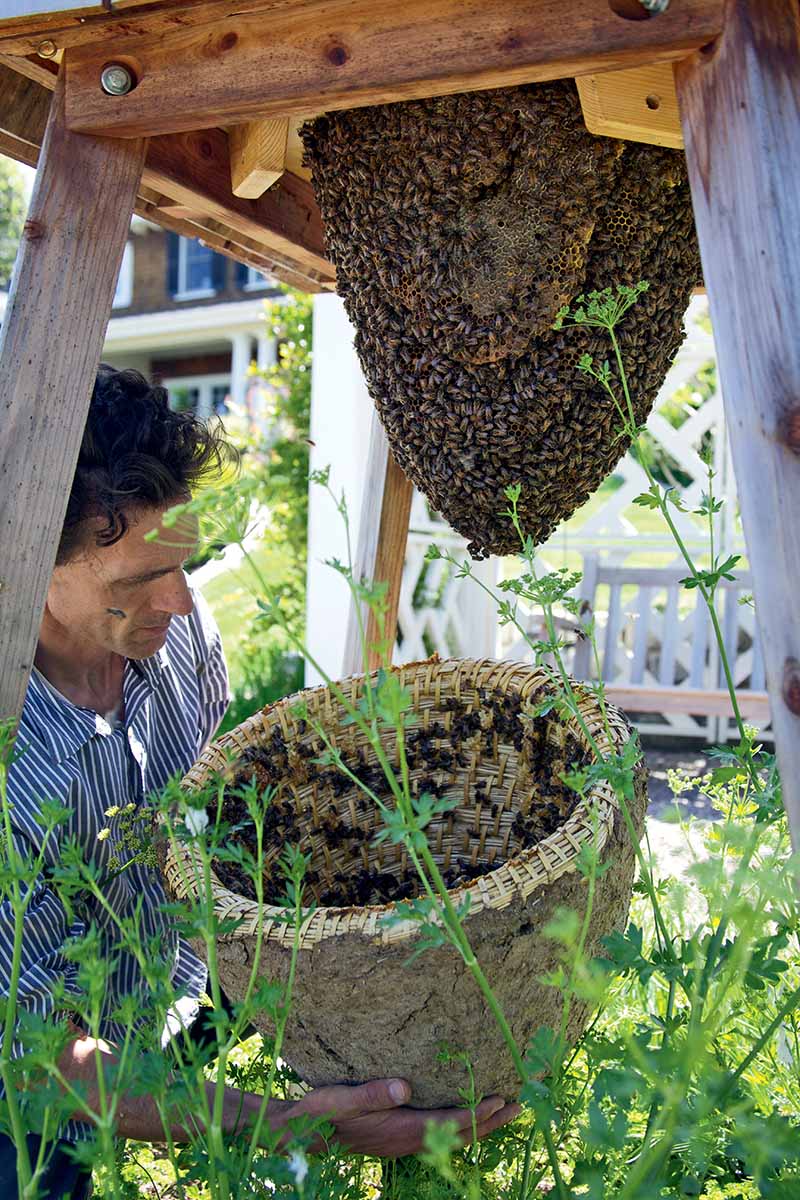
Throughout, what stood out to me was how Flottum and Bruneau discuss swarming like it’s a good thing!
Swarming is often presented to new beekeepers as something to prevent. However, the authors argue that benefits of allowing your hive to swarm, such as a natural brood break, outweigh the detriments, which boil down to reduced honey production.
This book really encourages a hands-off management style, which I’ve rarely seen or heard of in my previous bee reading. Intensive management and manipulation are often considered responsible beekeeping practices.

Next up, the authors provide guidance on choosing hive building materials, exterior design, interior options, and hive location in “More Real Estate Decisions.”
Another enlightening moment for me was when the book explained that wax moths, which are considered a pest to most beekeepers, have a mutually beneficial relationship with bees in the wild.
They help keep the bees healthy by removing old, unused comb that may contain a buildup of toxins. This perspective is completely new and refreshing!
Staying Healthy
Rather than covering each of the pests and diseases that bees may face, this book focuses on varroa mites and hopes the natural, Bee-centric approach presented can be applied in dealing with other issues as well.
The reader is introduced to the menace Varroa destructor in the chapter entitled “Public Enemy Number One,” and the various control and management strategies beekeepers use today, from heavy chemical treatments to a hands-off, survival-of-the-fittest approach.
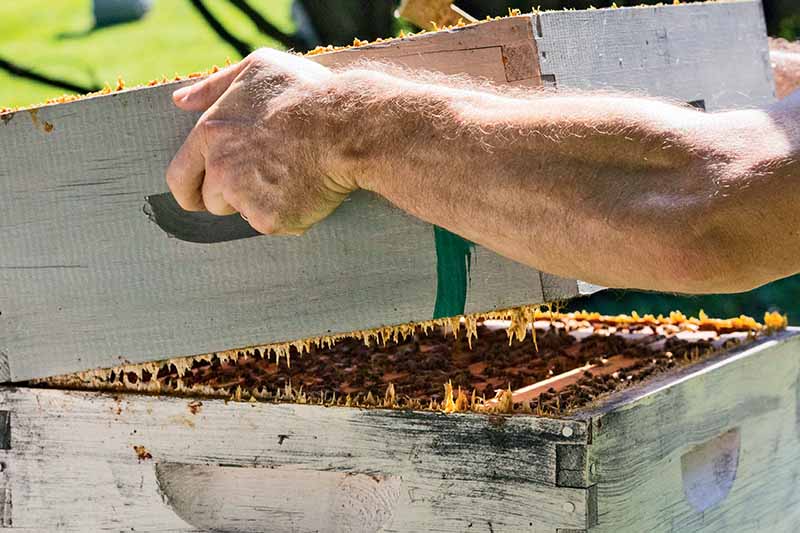
This is followed by a discussion of how to successfully pull off a chemical-free strategy, including keeping locally adapted and mite-resistant bees, ensuring good nutrition, choosing the best hive and hive spacing, and physical manipulations such as destroying drone brood.
Each is viewed from the Bee’s angle, and the common sense natural beekeeping viewpoint shines through.
Swarming, in all its natural glory, is explained in a section of the same name that follows.
From the beekeeper’s perspective, swarming means losing half a hive of bees, productivity, and honey production. But a swarming hive is a healthy hive.
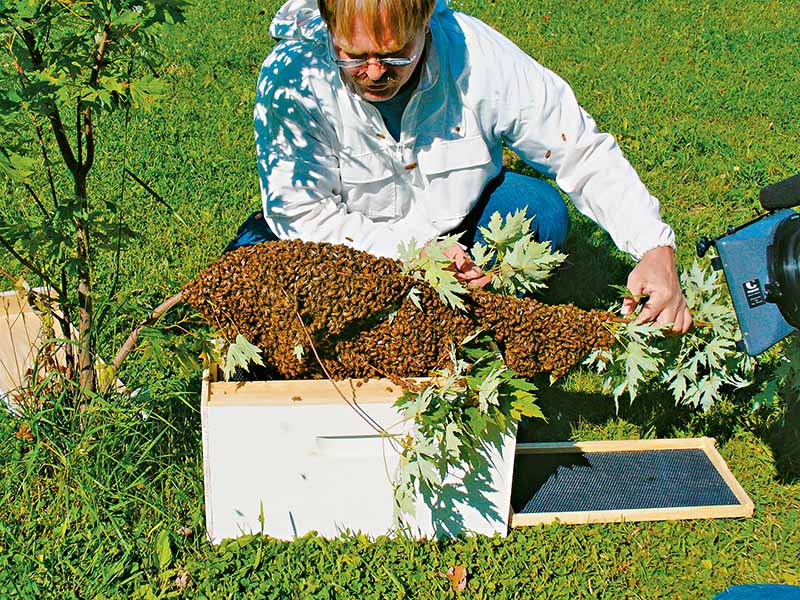
The authors discuss swarm prevention versus management, and decisions such as splits and queen rearing, through the lens of the Bee.
One of the biggest reasons bees in general are struggling is available nutrition, and this is addressed in “What’s for Lunch?”.
Flottum and Bruneau delve into the Bee’s diet components before discussing whether feeding sugar (and when) is common sense or natural. They do not discuss feeding pollen or protein substitutes.

They end this section by putting out a call for pollinator corridors in areas of monoculture, something everyone can contribute to by planting native, nectar- and pollen-rich plants.
Common Sense Natural Beekeeping in Practice
Drawing on case studies of five beekeepers from around the world, the authors make a case for the potential of using a bee-centric approach and the plethora of ways it can be applied.
The beekeepers profiled vary from having a few hives in their backyard to over a hundred hives, keep their bees in a wide variety of hive types, and use different management methods.

The book closes out with a page of final recommendations, summarizing the Bee’s preferred hive design and management.
After the conclusion, the authors list referenced and suggested further reading and research, which I really appreciated.
It gives everything I just read legitimacy and a scientific foundation, which I’m sure you will appreciate as well.
Final Thoughts
As soon as you become the proud keeper of a hive full of bees, the responsibility of helping them not just to survive, but thrive, also falls on your shoulders.
There are loads of books available prescribing many different management methods and it can be hard to sift through and find the best, most natural ways.
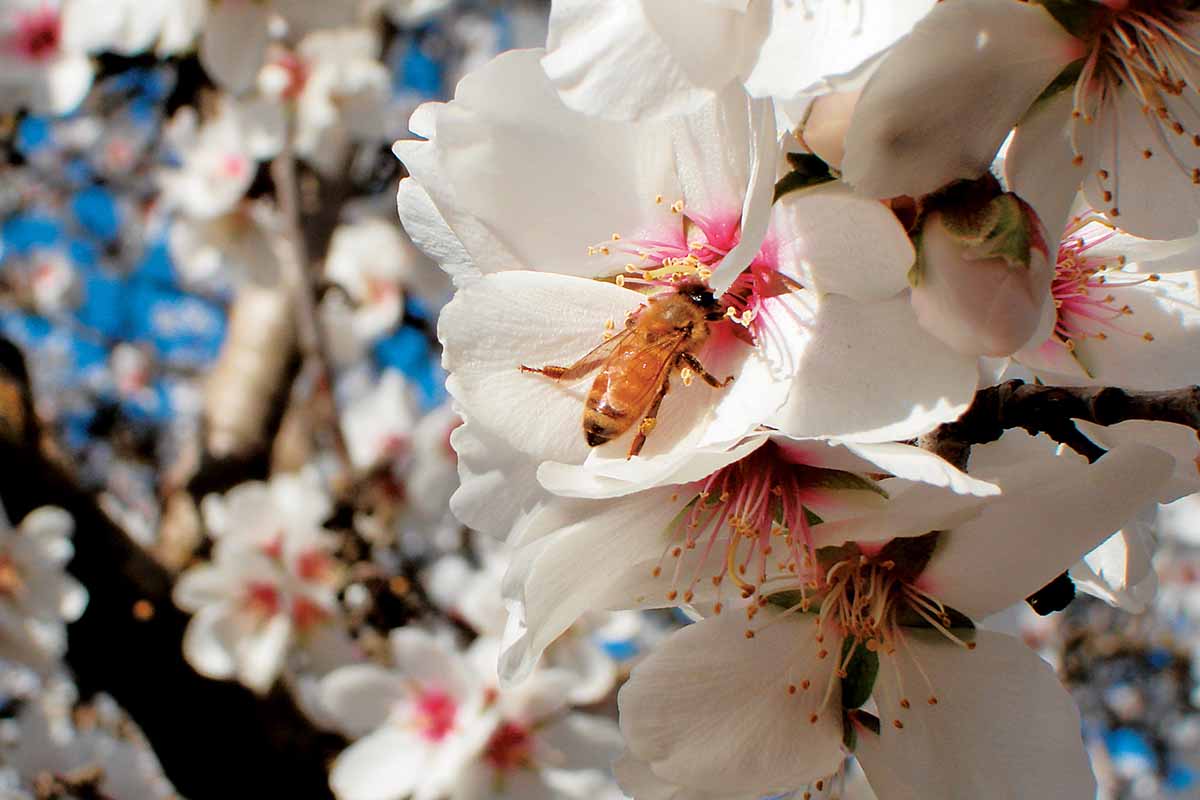
This book will help you to make decisions informed by the wild Bee’s natural intelligence.
If you are a beekeeper looking to address and improve the sustainability of your bee hobby or business in a natural way, I highly recommend this book.
The concepts are simple and enlightening, and the techniques described are adjustable and adaptable for any beekeeping situation.

Common Sense Natural Beekeeping
Kim Flottum and Stephanie Bruneau’s “Common Sense Natural Beekeeping: Sustainable, Bee-friendly Techniques to Help Your Hives Survive and Thrive” is available on Amazon now.
Are you planning to read this book? If you do, let us know what you think of it in the comments section below.
Plus, if you found this article helpful, check out our other book reviews to help you find the best resources to explore your interests and meet your needs, starting with these: